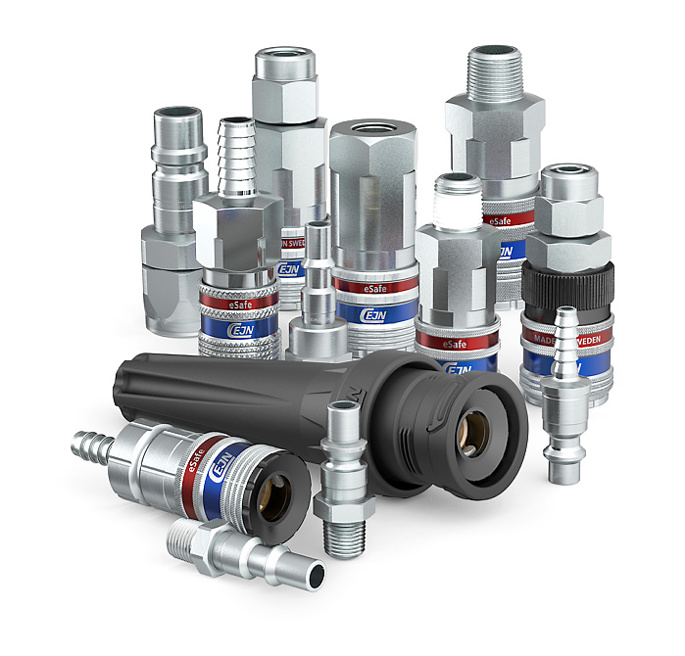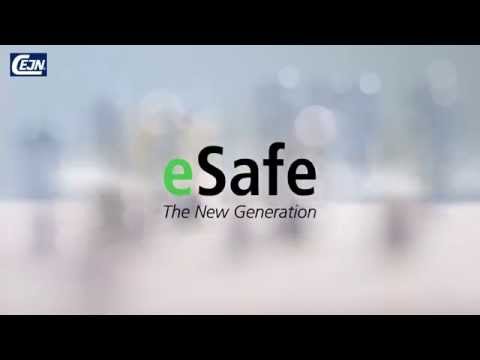eSafe quick couplings
Vented safety One hand operation Safety product Stainless steel ISO 4414
Compressed air safety couplings that vents before disconnection
Technical data
| Max working pressure (bar) | 12 - 70 bar |
| Material coupling | Stainless steel (AISI 316), Stainless steel hardened (AISI 316), Steel (Zinc), Steel/brass (Zinc) |
| Material nipple | Stainless steel (AISI 316), Steel hardened (Zinc), Steel/brass hardened (Zinc) |
Increase productivity with CEJN eSafe coupling series
- eSafe can cut your energy consumption up to 30%
The high flow enhances your tool performance for increased productivity. The secret behind this innovative and patented safety coupling is the highest flow on the market combined with a low pressure drop.
During disconnection eSafe vents the down steaming pressure, eliminating recoil and reducing noise level. In addition, eSafe has a low connecting force, compact and easy to grip design which makes it the natural choice when choosing a high performing safety product. Its extreme durability together with the many benefits will give you a reliable product for years to come.
Six reasons to choose eSafe quick connectors
-
Vented Safety function
eSafe was designed with a vented safety function according to ISO 4414. It vents the down streaming pressure before disconnection, reducing noise level and eliminating the risk of operator injury caused by recoil.
-
Easy handling
eSafe is an ergonomic and one hand push to connect and disconnect coupling. Other safety couplings usually have several steps. With eSafe, just pull the sleeve and the coupling will automatically vent before disconnecting.
-
Save energy with high flow and low pressure drop
When designing eSafe we made no compromises in performance. We are proud of the fact that eSafe has the highest flow on the quick connect coupling market. The high flow and low pressure drop means that the coupling requires less compressed air and the compressor can be set at a lower pressure. Resulting in increased efficiency and reduced production time.
-
Compact design
You should not have to compromise on size. CEJN couplings are known for their compact design. eSafe is no exception, it is the first safety coupling with dimensions like a standard quick connect coupling.
-
Extreme durability
eSafe is designed to withstand tough handling in rough work environments in order to have a long service life. Tests has proven that eSafe is extremely durable against impacts, vibrations and swiveling. Our customer testimonials all states the same fact, eSafe handles the pressure.
-
Leak free
The eSafe coupling is leak free, this means no unnecessary air loss between coupling to tool and the compressor doesn’t have to compromise for the air leakage. Production time will be reduced due to increased efficiency. This enables you to produce more in less time.
Get the job done faster and safer while saving energy
The eSafe quick couplings for compressed air are designed for safe operation with vented disconnection to avoid potential dangerous hose whipping effects and the high sound upon disconnection that too often is associated with compressed air. It's also designed with one of the market's best pressure drop performance. That will give you more power for your tools - which is key in order for compressed air to be energy efficient.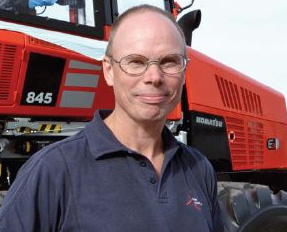
"We always look at the overall economy and eSafe saves us money"
- Esbjörn Öberg, Tool technician, Komatsu Forest
60 years of continuous improvements
eSafe is the result of 60 years of experience in developing compressed air quick couplings. Each generation has taken a step further within safety and efficiency to get where we are today with the market's number one safety coupling for compressed air - eSafe.

Manuals and brochures
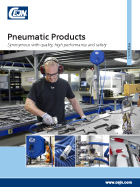
Pneumatic Range
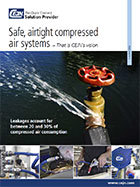
Safe, airtight compressed air systems
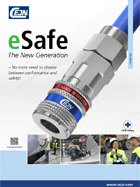
eSafe with Series 430 and 550
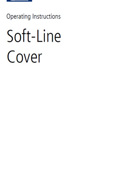
Soft-Line Cover
Assembly instruction for the Soft-Line covers.
Instruction videos

